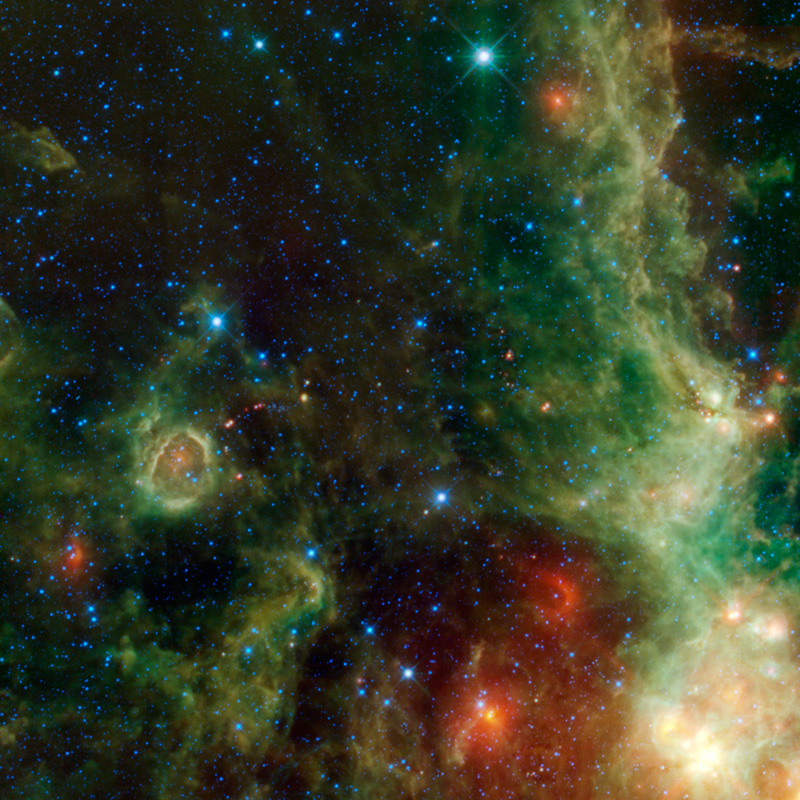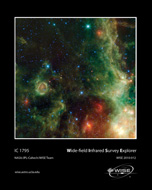|
 |


Apr. 16, 2010 - IC 1795
This image from WISE is a view within the constellation Cassiopeia of another portion of the vast star forming complex that makes up part of the Perseus spiral arm of the Milky Way Galaxy. Two of the previously released images from WISE are also a part of the same star formation complex of nebulae: The Soul Nebula and Maffei 1 and 2. A distinct star forming region is visible in the bottom right corner this image, called IC 1795. Most of this region appears dark and relatively devoid of stars in photographs taken in visible light. This is because of the obscuring dust, but that same dust glows brightly in the infrared images obtained by WISE. The cloud is located just over 6,000 light-years away from Earth. Stars forming in this image are all relatively young, on the order of millions of years. That is young in comparison to stars like the Sun, which is nearly 5 billion years old.
This image covers an area of sky larger than 12 full Moons. All four infrared detectors aboard WISE were used to make this image. Color is representational: blue and cyan represent infrared light at wavelengths of 3.4 and 4.6 microns, which is dominated by light from stars. Green and red represent light at 12 and 22 microns, which is mostly light from warm dust.
Image Credit: NASA/JPL-Caltech/WISE Team |
|





